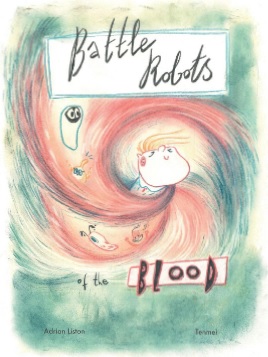Share a child? Then your immune systems look pretty similar too
 Monday, February 15, 2016 at 5:29PM
Monday, February 15, 2016 at 5:29PM The human immune system is shaped by family and household
Raising a child together has a greater effect on your immune system than the seasonal 'flu vaccine or travellers' gastroenteritis, a study by researchers at the VIB in Belgium and the Babraham Institute in the UK has found.
The research took a detailed look at the immune systems of 670 people, ranging from 2-86 years of age, to understand more about what drives variation in our immune systems between individuals. From an assessment of the effects of a range of factors, including age, gender and obesity, one of the most potent factors that altered an individual's immune system was whether they co-parented a child. Individuals who lived together and shared a child showed a 50% reduction in the variation between their two immune systems, compared with the diversity seen in the wider population.
Dr Adrian Liston, a researcher at the VIB and University of Leuven who co-led the research said: "This is the first time anyone has looked at the immune profiles of two unrelated individuals in a close relationship. Since parenting is one of the most severe environmental challenges anyone willingly puts themselves through, it makes sense that it radically rewires the immune system - still, it was a surprise that having kids was a much more potent immune challenge than severe gasteroenteritis. That's at least something for prospective parents to consider - the sleep deprivation, stress, chronic infections and all the other challenges of parenting does more to our body than just gives us grey hairs. I think that any parents of a nursery- or school-age child can appreciate the effect a child has on your immune system!"
Every individual has a unique immune system, something which can be visualised as a unique location in “immunological space”. Our immune systems are also dynamic, with minor differences on a day-to-day basis. The biggest shapers of our immune systems are age, with a gradual ageing of the immune system over time, and cohabitation, where having a child together causes the unique immune signature of each individual to come much closer. Image produced by Dr Carl
Participants in the study were assessed over a period of three years. Regularly monitoring their immune systems showed that the individuals maintained a stable immune landscape over time, even after their immune systems were triggered into action by the seasonal ‘flu vaccine or gastroenteritis. The researchers found that following immune challenge, our immune systems tend to bounce back to the original steady state, demonstrating the elastic potential of our immune system.
In assessing the effect of other factors on the immune system, such as age, obesity, gender, anxiety and depression, the study found that age is a crucial factor in shaping the immunological landscape, agreeing with the age-related decline seen in response to vaccination and reduced resistance to infection.
Dr Michelle Linterman, a researcher at the Babraham Institute who co-led the research said: “Our research shows that we all have a stable immune landscape which is robustly maintained. What is different between individuals is what our individual immune systems look like. We know that only a small part of this is due to genetics. Our study has shown that age is a major influence on what our immune landscapes look like, which is probably one of the reasons why there is a declining response to vaccination and reduced resistance to infection in older persons.”
The research is published by the leading international journal Nature Immunology and was funded by two European Research Council grants. Dr Michelle Linterman and her group at the Babraham Institute are supported by the Biotechnology and Biological Sciences Research Council. Dr Adrian Liston and his group are members of the VIB and University of Leuven, in Belgium.
Publication: Carr et al. (2016) The human immune system is robustly maintained in multiple equilibriums by age and cohabitation. Nature Immunology
 Liston lab,
Liston lab,  immunology
immunology 











